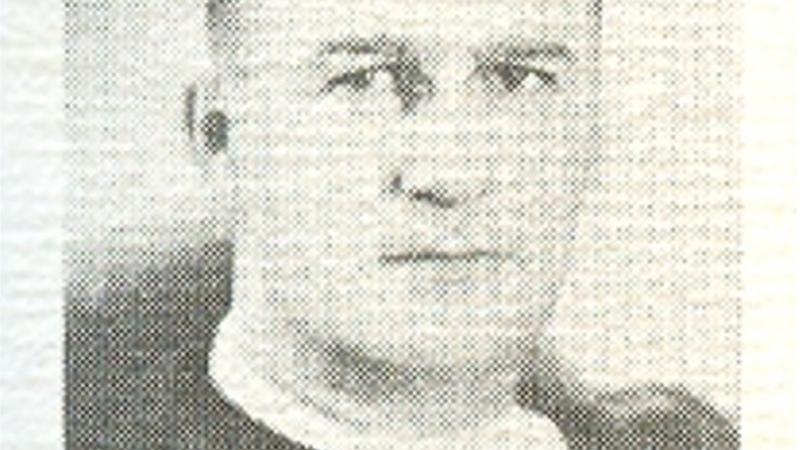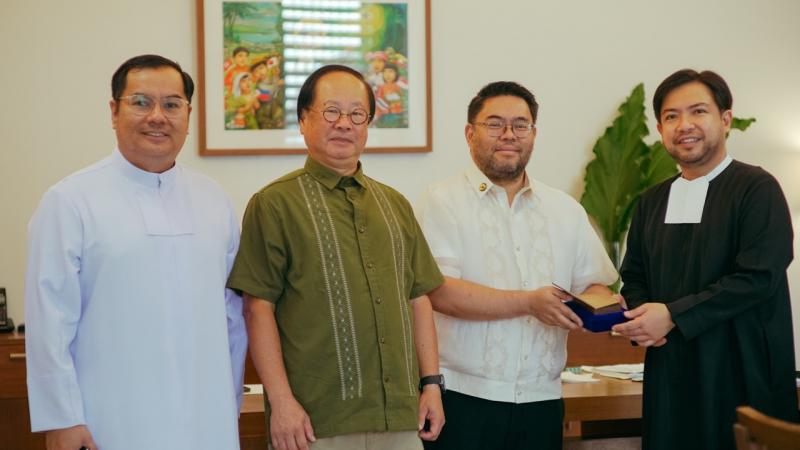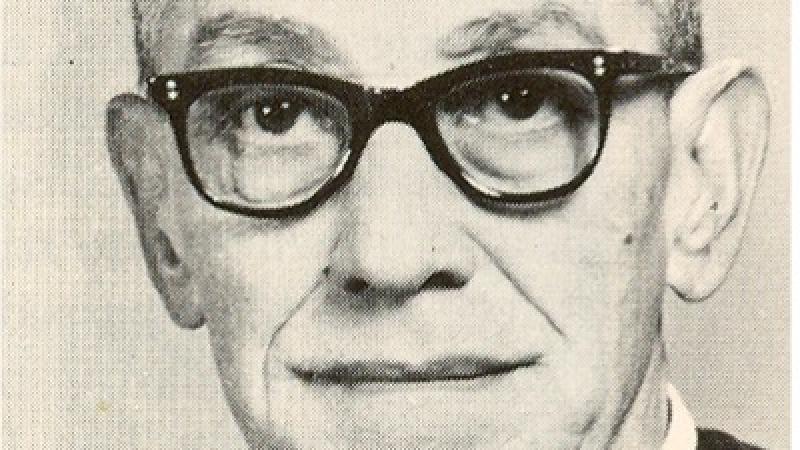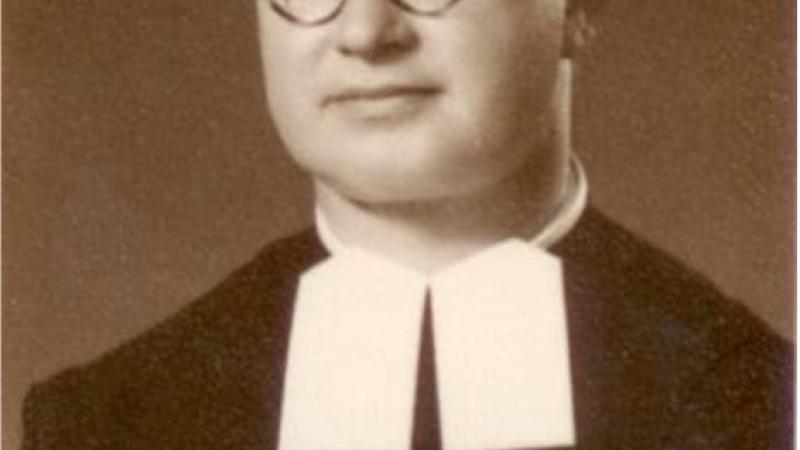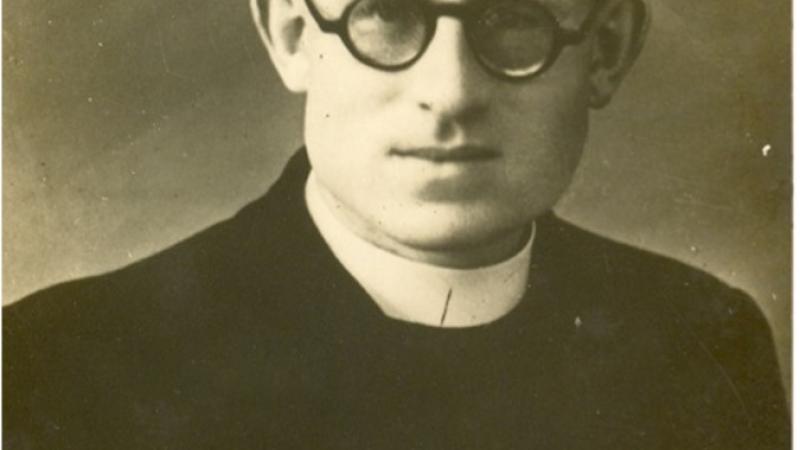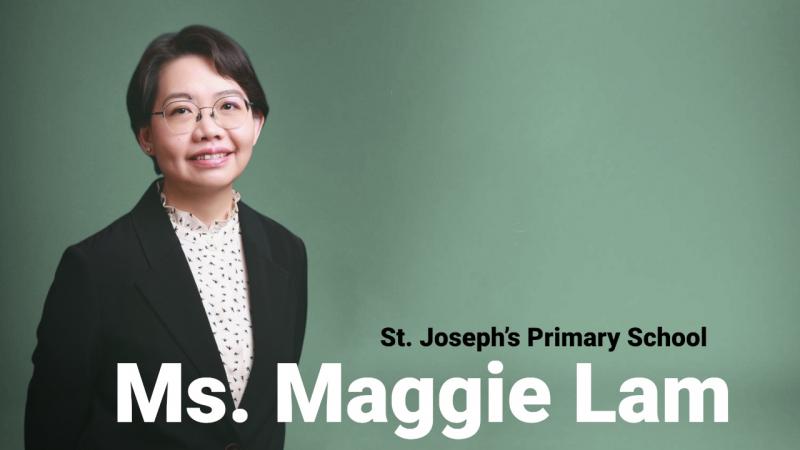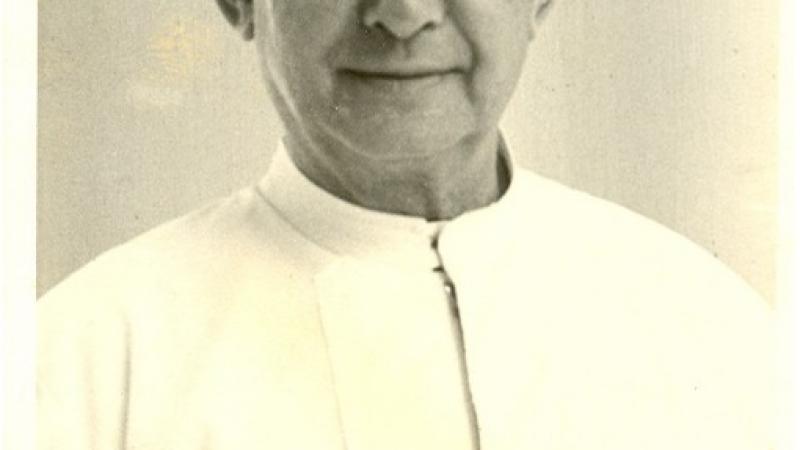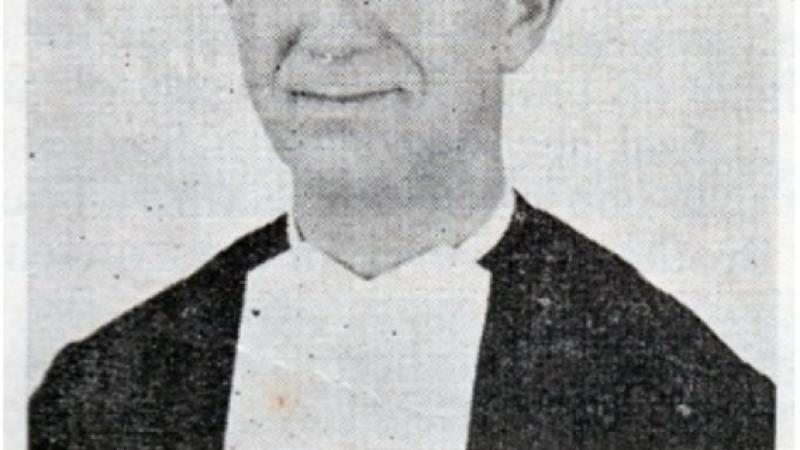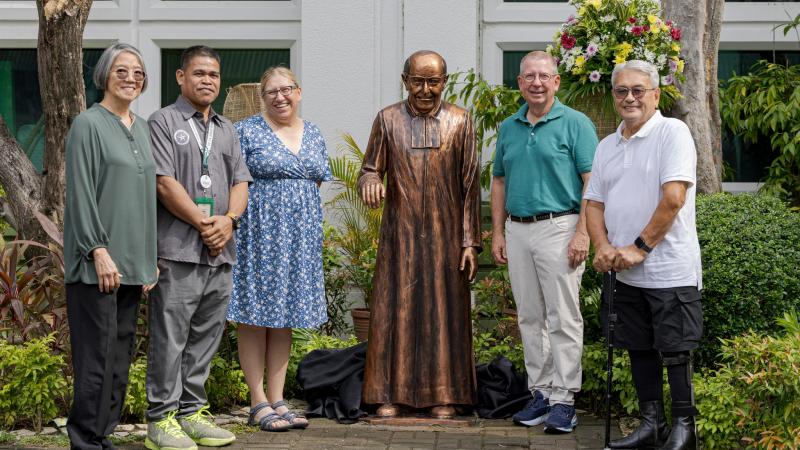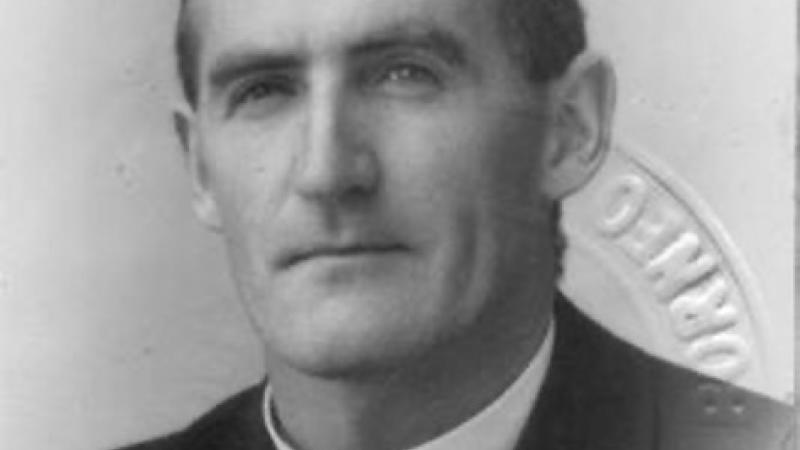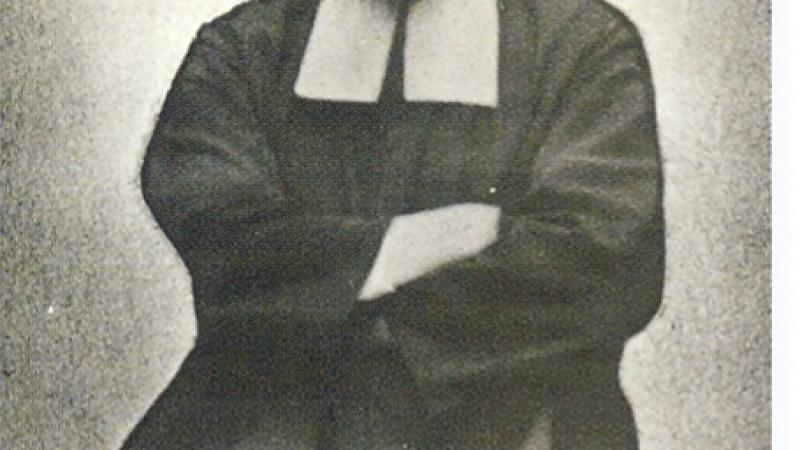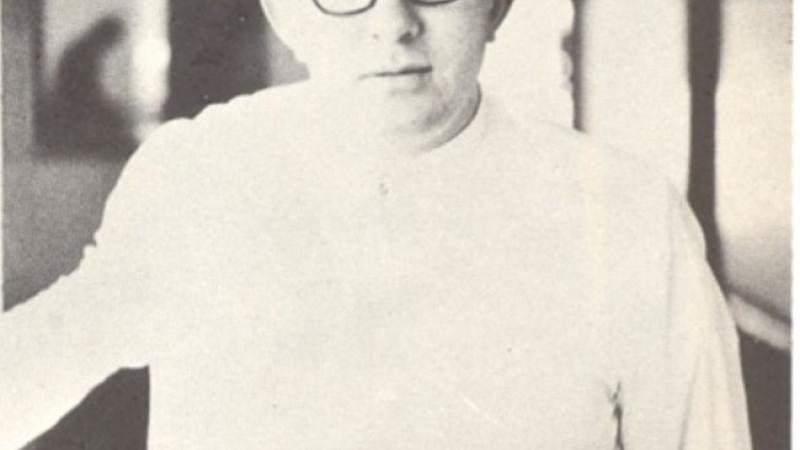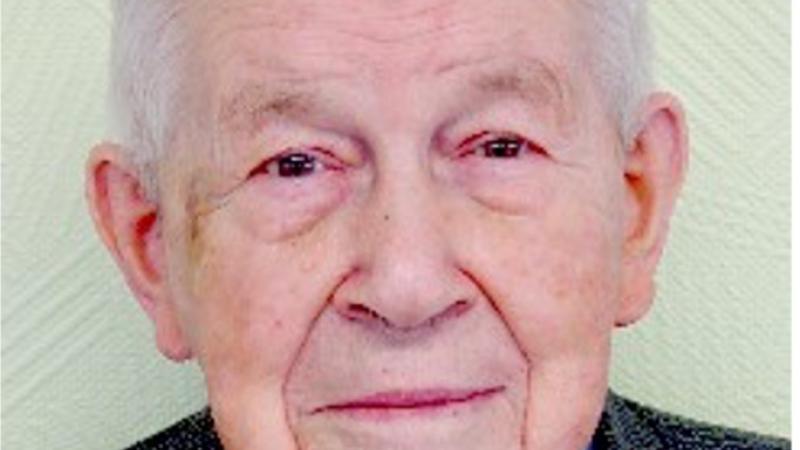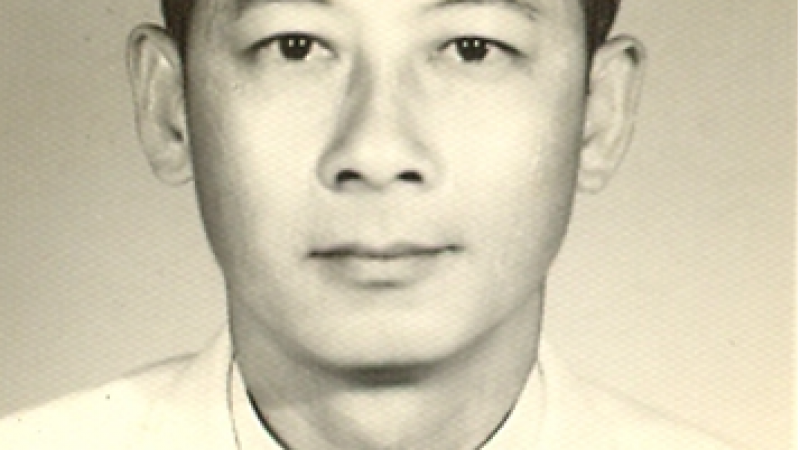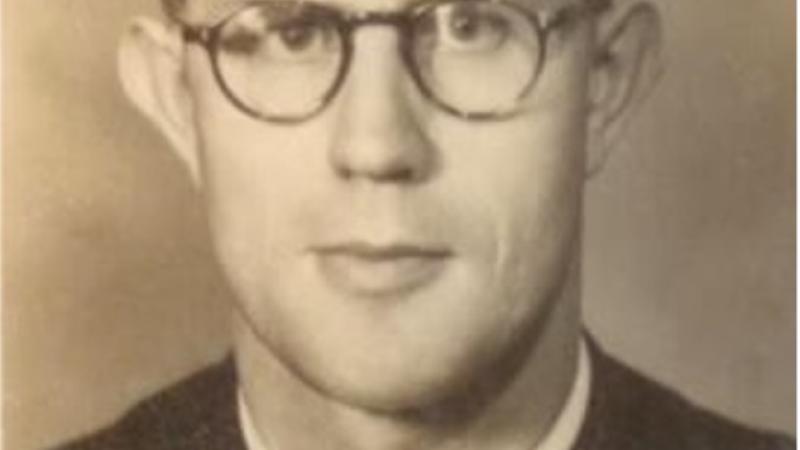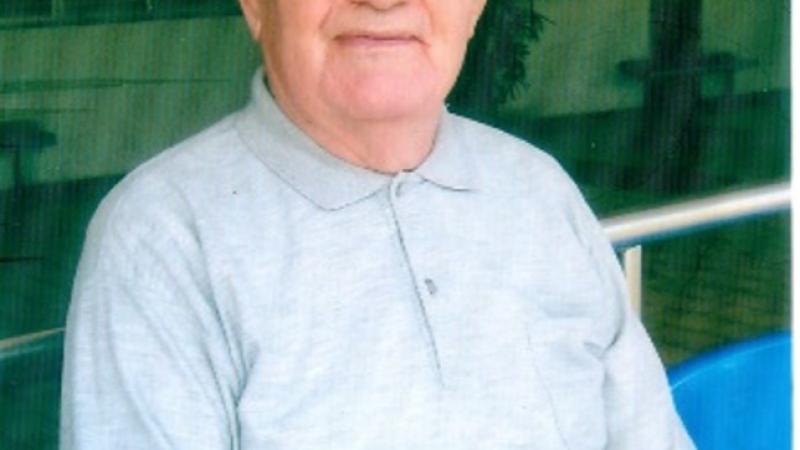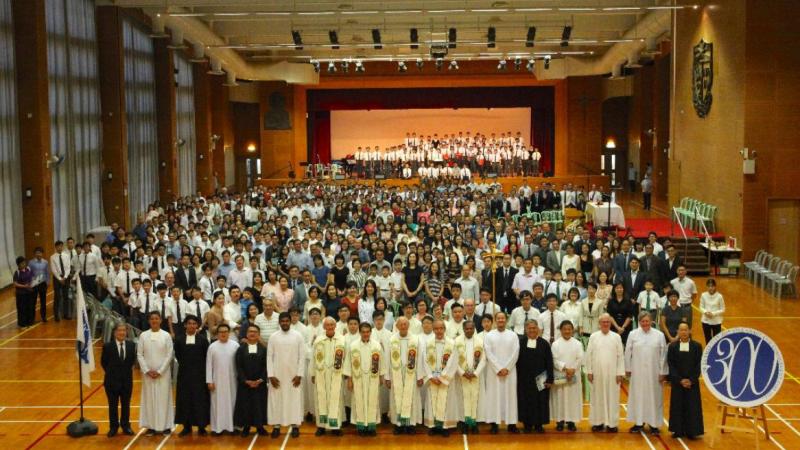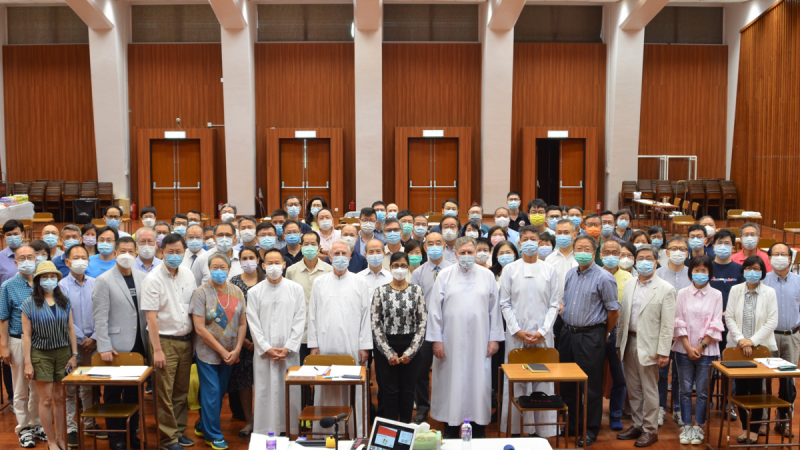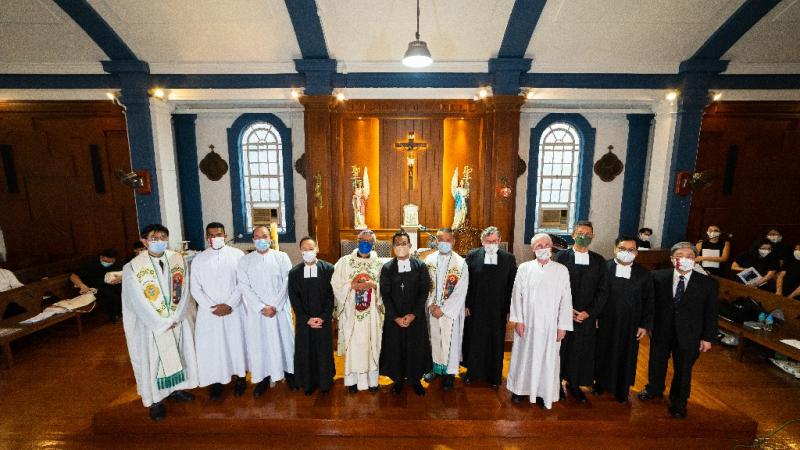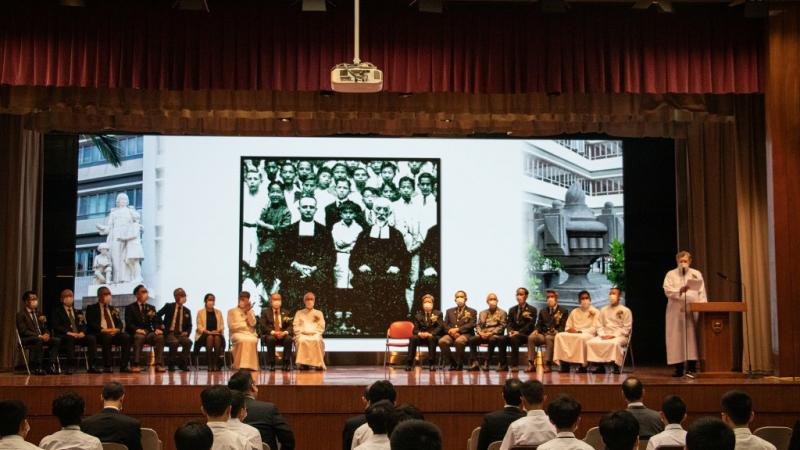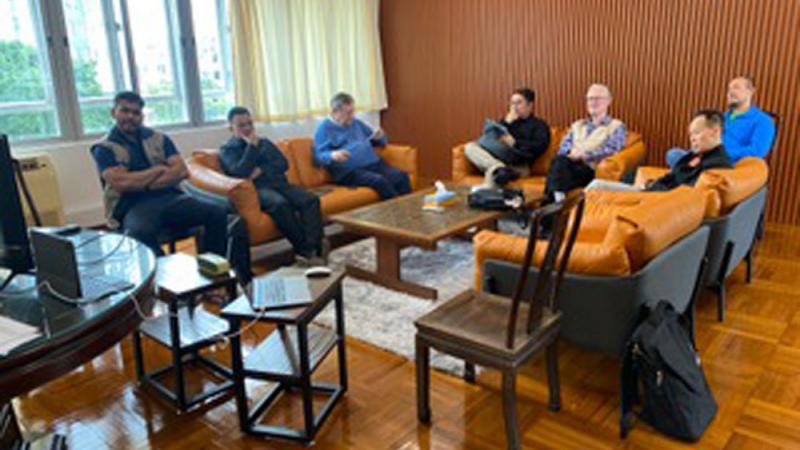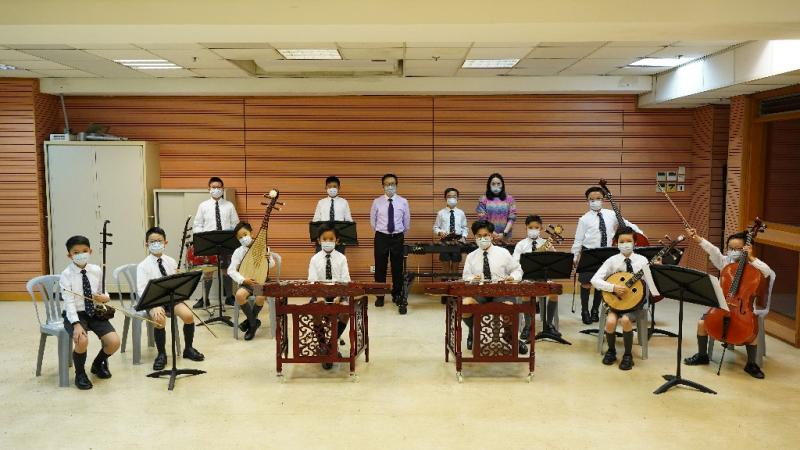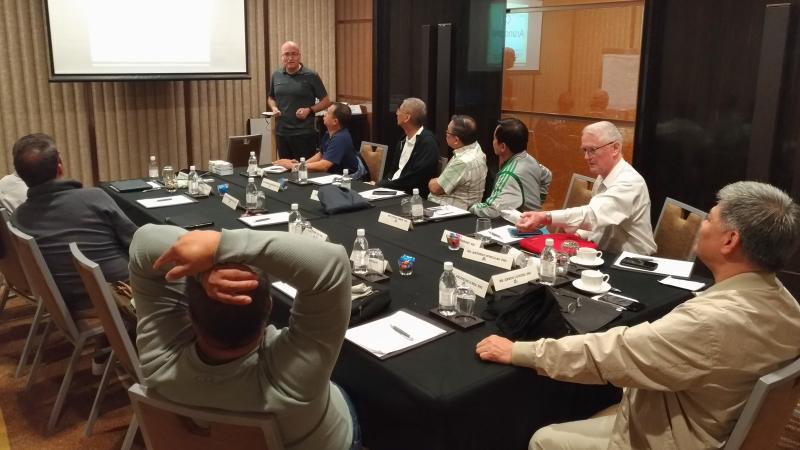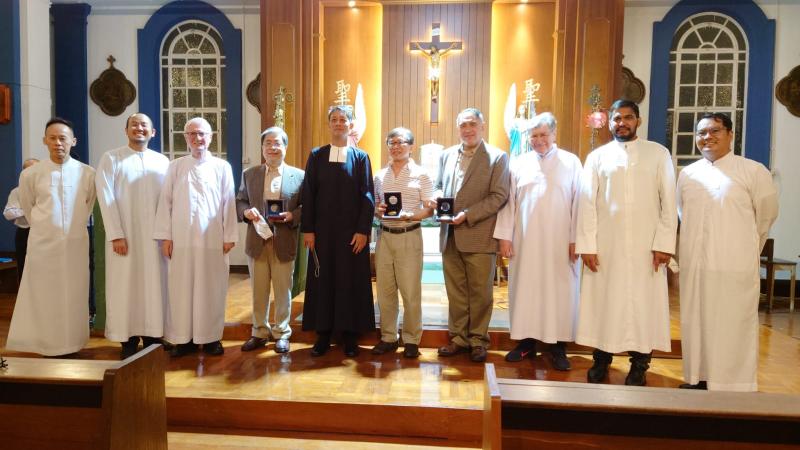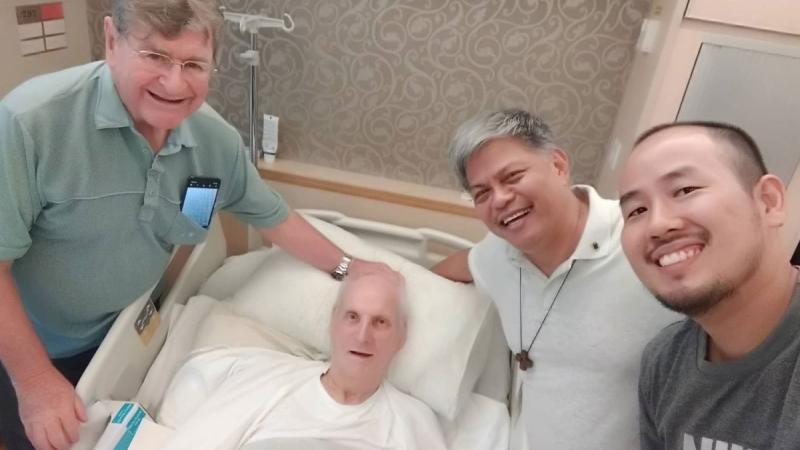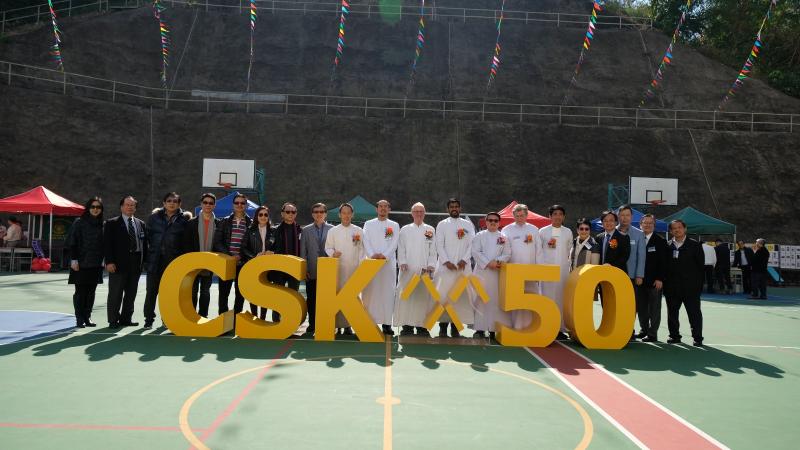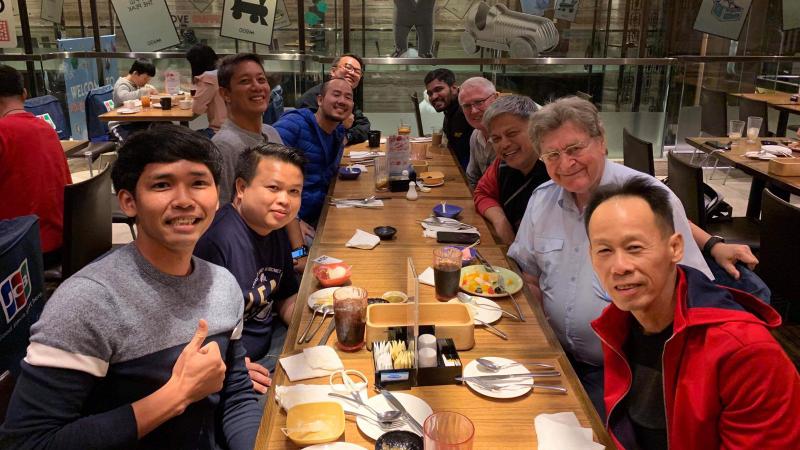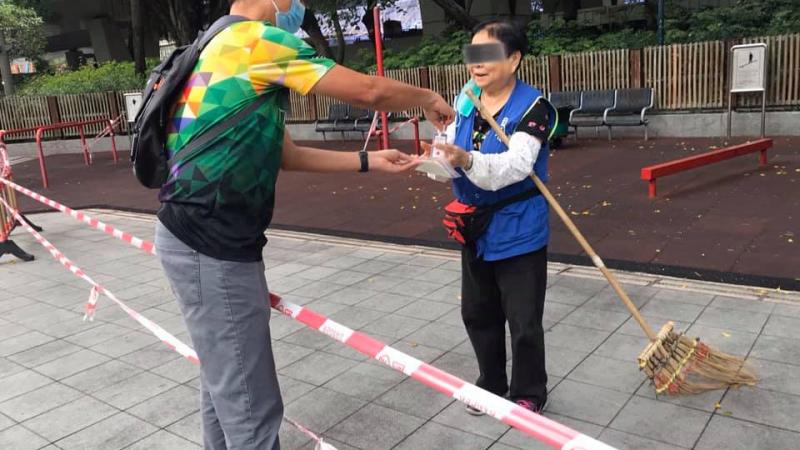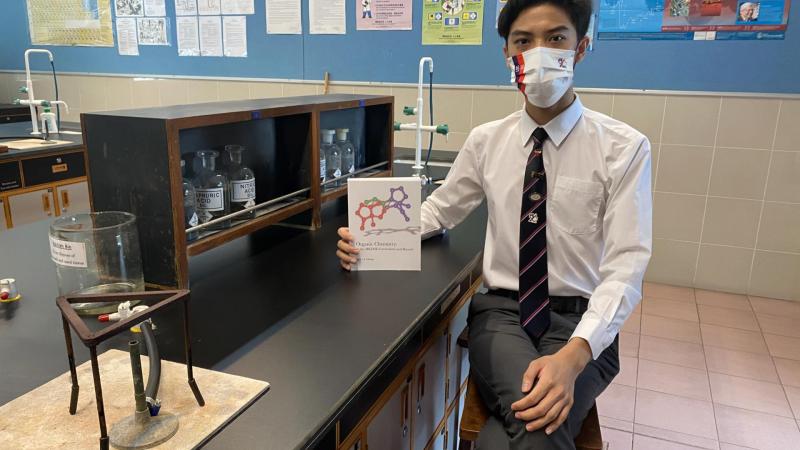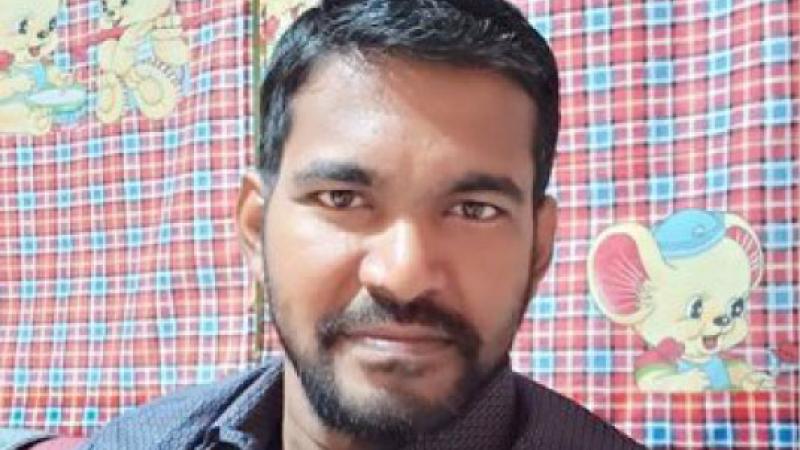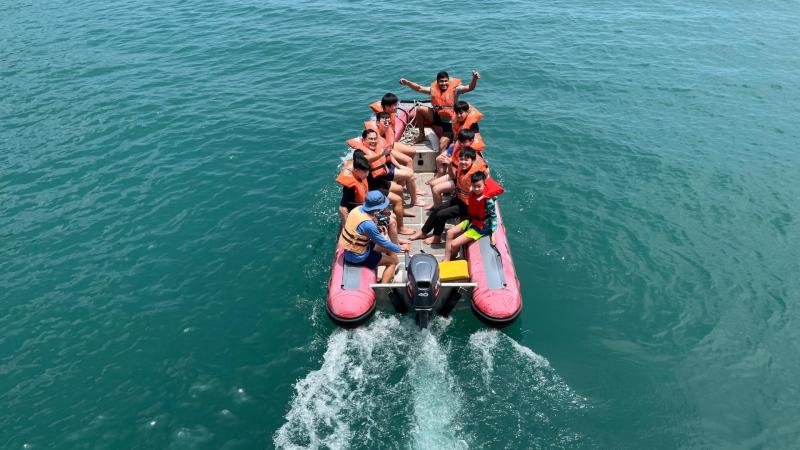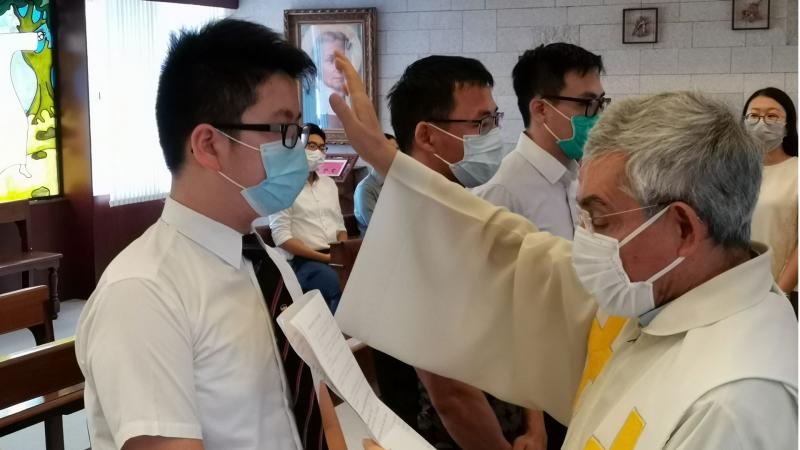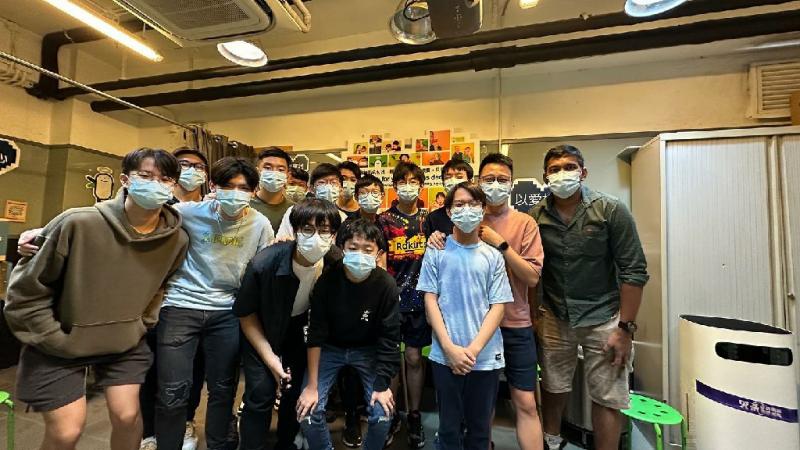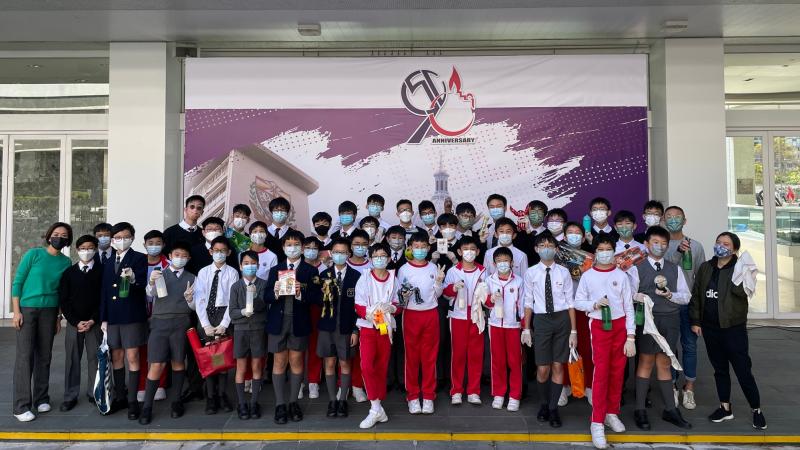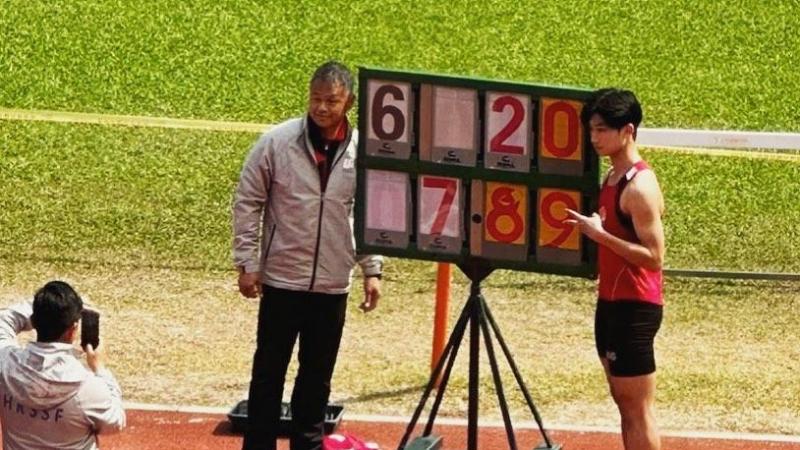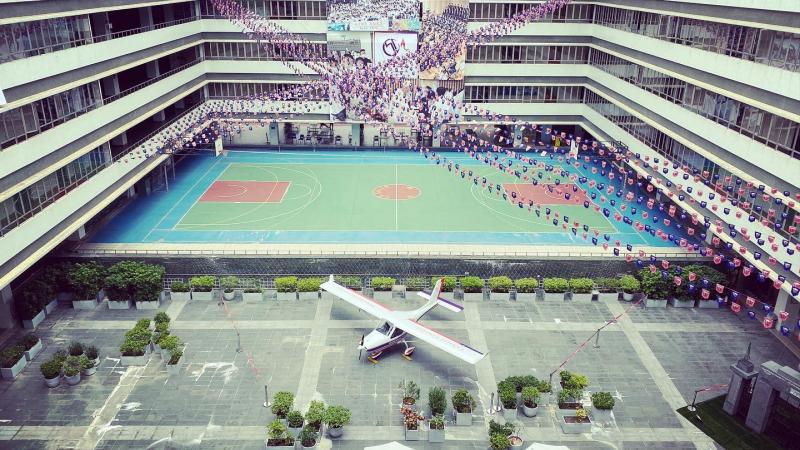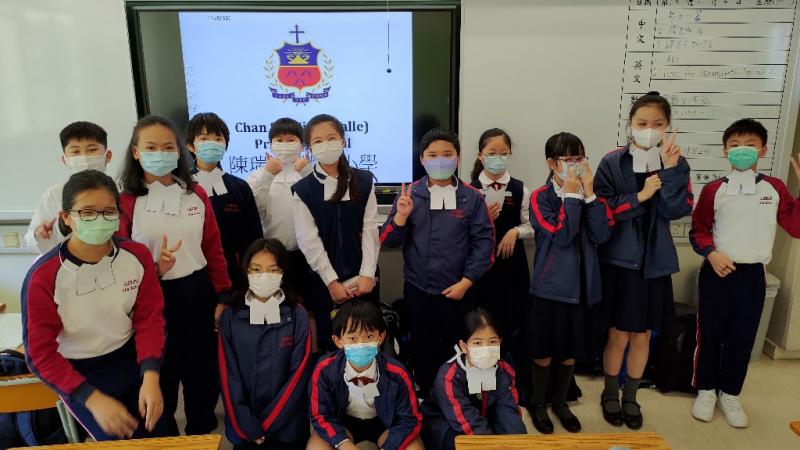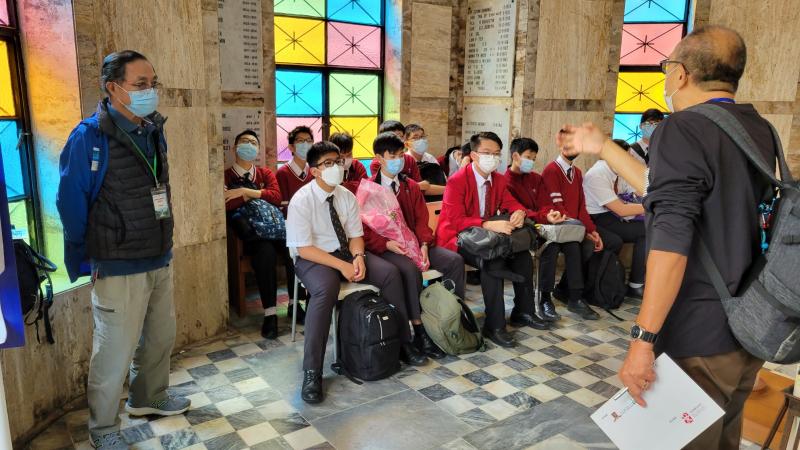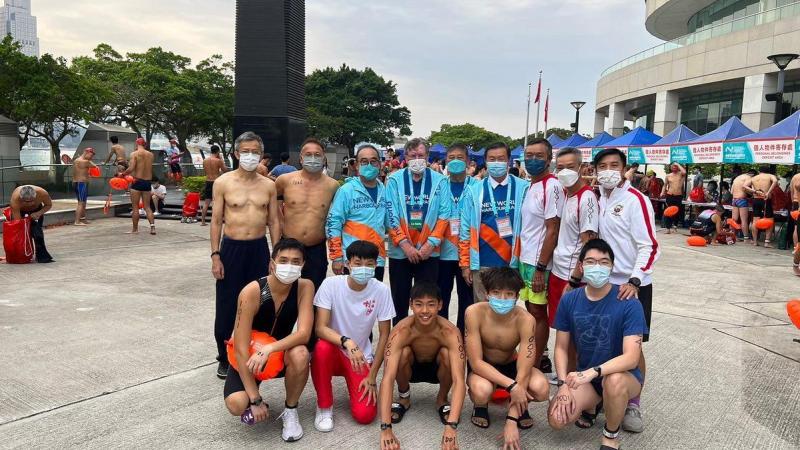
Originally published in The Gateway Issue No. 25 (September 2010)
Francis Gaughran, later called Brother Fridolin, was a small man with a big personality. He was born on the 15th of November 1915 in Trim, on the plains of County Meath, Ireland and was always to hold a special affection for the County of his birth, the ancient seat of the high kings of Ireland. He was one of a family of seven children. They were brought up to love and serve God according to Catholic teaching. He received his early education at the local Primary school. In 1930, he joined the Juniorate of the De La Salle Brothers in Castletown, County Laois. He entered the No¬vitiate the following year and took the Holy Habit and was given the name Brother Fridolin of Jesus. A further year of studies followed the Novitiate before he was selected to complete his studies at Inglewood in England. A companion at the time records that Brother Fridolin was quiet, steady and sincere, and not given to fanfare.
It was in the lovely surrounds of Inglewood that he felt called to volunteer to serve in the East. Before departure, he was allowed a short holiday home which he much appreciated. As the holiday was nearing its end, however, and Brother Fridolin was visiting relatives and friends, tragedy struck. He saw a crowd on the banks of the River Boyne and went over to see what was happening. Alas, the body of his younger sister was being taken from the river. She had fallen in accidentally. Brother Fridolin attended the Requiem Mass and burial service and had to leave for the East the next day. He carried this tragic loss in his memory all through his life, mentioning it only very occasionally.
He sailed for the East towards the end of 1934 and was not yet 19 years old when he began his missionary career in the classroom starting in St Patrick’s School, Singapore and then in turn St John’s Institution, Kuala Lumpur, St Xavier’s Institution, Penang and St Joseph’s Institution, Singapore. From the start he was a fine teacher, capable and conscientious. Though short in stature, he never faced discipline problems, even with the oldest or slowest students. Indeed, he was quite opposed to any form of corporal punishment. A former student wrote:
“He always wore a smile on his face and had a quick wit and a pleasant sense of humour. He never failed to give a word of encouragement to the needy, irrespective of race or creed.”
One aspect of his personality soon became evident, a passion for cleanliness, neatness and order. As one Brother put it, he was “the trim wee Brother from Trim”. Everything had to be in its proper place. His bedroom was spick and span. He carried this passion for neatness and order into the classroom.
It was during these early years, while serving at St Xavier’s, Penang, that Brother Fridolin took his first lessons in playing the violin. With practice he became quite proficient and playing a few tunes became a regular part of his afternoon routine. He joined the school orchestra and had weekly orchestral practice. Performances were given on Prize-giving and Speech days and Concert nights at which he played with great finesse and enjoyment. He also loved a singsong and particularly appreciated some of the old Irish rebel songs. His own favourite was “A Nation Once Again”.
Brothers, young and not so young, are not exempt from occasionally joking or teasing. Brother Fridolin’s 5’2’’ stature was the butt of many jokes which he took with good grace. Questions like “Do I hear a voice?” or “Where is he?” would be aimed in his general direction. Or when playing games he might be advised to keep a “low profile”. Whatever he lacked in height he more than made up for in spirit and determination and would fight his corner to the last.
The sudden onset of the War brought an end to those happy and relatively carefree days. Brother Fridolin was in St Joseph’s, Singapore, at the time. He survived the initial deadly Japanese bombardments and, when things settled down somewhat, was allowed to teach in a government school but the learning and teaching had to be in Japanese. His main task was teaching Japanese songs to the accompaniment of his violin. When the chance of escaping the watchful eyes of the Japanese came, Brother Fridolin, together with a large number of other Brothers, the Bishop and some Catholics, headed for the jungles of Malaya. The Japanese authorities had led them to believe that everything was in order for occupation and settlement. The reverse was the case.
In a place called Bahau, some miles from the town of Seremban, the settlers had to start their jungle occupation almost from scratch. Duties were assigned and Brother Fridolin was first assigned to kitchen work, washing and drying dishes. Later he was to take charge of livestock but only managed to purchase a few skinny goats from the local farmers. The worst scourge of jungle life was contracting the dreaded malaria disease. Brother Fridolin succumbed to a serious attack but fortunately recovered before the War ended in September 1945.
As soon as peace was declared the Brothers returned to Singapore and home leave was arranged in turn. Brother Fridolin’s turn came towards the end of 1946 when he was told to take a holiday home followed by a degree course in University College Dublin. It had been 12 years since he last saw his family and there was much rejoicing. His degree course finished in 1950 and in November he was setting sail once again for the East. He was posted to St Xavier’s, Penang.
Just over three years later he was given a much tougher assignment. He was to be Director and Principal of a school called Sacred Heart in Sibu, Sarawak, East Malaysia. He had to start a new Community of Brothers, take over the running of both the primary and secondary school and find means of paying the staff, a daunting task. He set to work assisted by Brothers Austin Moylan and Justin Phelan and later Brother Columba Gleeson. Conditions were pretty primitive, the school consisting of three wooden shacks and the Brother’s house a wooden hut. Yet when Brother Fridolin left Sibu ten years later, the old wooden shacks had given way to a sturdy two-storey concrete school, complete with large hall and modern science laboratories and the Brothers were housed in a fine new community building. The secret of this success was Brother Fridolin himself. The people grew to love him and his straightforward and gentle ways. They were happy to help him in every possible way. Brother Columba Gleeson, who lived with him at the time, says it well:
“He was a great religious, strict, almost scrupulous, in ways; a man of simple faith and deep commitment. But he was also deeply human, a man of great kindness and gentleness. I never remember him punishing a pupil physically; it wasn’t necessary and he would not have had the heart to do it”.
Sacred Heart school built up a reputation for strong academic performance, for good discipline and for extra- curricular achievement. As Brother Fridolin himself wrote: “The boys are good, hardworking, intelligent and generous. They are anxious to succeed”.
More pioneering work beckoned in January 1963 when he was sent as Director and Principal of St Mary’s School, Sandakan, Sabah. This time he was assisted by Brothers Frederick Lynch and Xavier Jones. The school was in poor condition and consisted of a two storey structure with eight classrooms. It was on the edge of a swamp and mosquitoes and rats abounded. When school opened in January there were several teachers short and there were no books for the students. It was a constant draining battle to find and keep qualified teachers on the meagre salaries available, as well as to raise money to improve the school. But once again Brother Fridolin attracted widespread public support and within a few years a transformation had taken place as Brother Xavier recalls:
“Brother Fridolin built a fine three storey block, comprising office, library, classrooms and two science laboratories. He also recruited teachers so that Sixth Form classes were started. He himself taught English, English Literature and Scripture in Forms 4 and 5, something that could be said of few Principals, then or now”.
Whatever the conditions, Brother Fridolin would remain upbeat and was averse to negative comments about people or about the school.
In 1967 he was transferred to La Salle School, Kota Kinabalu, the capital city of the state of Sabah. He taught for a year in the secondary school before being appointed Headmaster of the primary school some distance away. He was much relieved to be saved from the burden of high office. It was in Kota Kinabalu that he graduated from the push bike to a motor cycle and it was a sight to behold the small headmaster whizzing up to school at some speed. Brother Charles O’Leary sums up his memories of Brother Fridolin at the time:
“He was a born community man. He loved companionship, a joke, a song. He loved a party and would contribute his share. He was a true Lasallian. I doubt he ever missed a chapel exercise. He was a man of simple tastes and simple lifestyle”.
Completely new pastures called in August 1971 when Brother Fridolin was transferred to Hong Kong. He taught English and Bible first at La Salle College and then in the summer of 1973 was transferred to St Joseph’s College where he continued to teach until retirement in 1976. It was the era of English compositions and précis and which the students did in their exercise books. Brother Fridolin would sometimes refer to such exercise books as “sizzling on my desk.” Even in retirement he continued to do some teaching and could be seen, book in hand, heading for the classroom well in advance of the bell. He taught the English Readers ‘across the two’s’. In addition he was a much loved Spiritual Director of Our Lady of the Star Praesidium of the Legion of Mary.
A strong interest was supporting the school sports teams. He would regularly go to the large sports-ground in Happy Valley to watch the football teams in action against other schools, a custom he observed throughout his life. He thought all games should open with a ‘blitzkrieg’, to pulverize the opponents from the start as it were, and was frustrated unless or until his team scored when he would dance with joy. “Why don’t they kick it?” was a constant refrain, referring to the football of course.
Another hobby was hiking and he was a familiar figure among the Kowloon hills and walkways of Hong Kong. He would usually head for the countryside every Saturday, always without headwear and often in the broiling sun. As a consequence his face became as red as a beetroot. A favourite walk was through the 14 villages in the New Territories. He would invariably end up in a shebeen and enjoy a cool beer and the company of the local people, the salt of the earth, as he would call them.
He did not neglect his old friend, the violin. Every so often, we would hear the strains of the violin from his room. In his younger days he had been among the first violinists in the school orchestra of St. Xavier’s Penang. And for a while during the War, as we have seen, he used the violin to teach Japanese songs. We knew that the day he hung up his violin would be a personal milestone.
Brother Fridolin had enjoyed excellent health throughout his life, apart from a malaria attack in the jungle camp at Bahau towards the end of the War. Now however the years began to take their toll, a stroke affecting his mobility. He could only walk the corridors in St. Joseph’s College and even that with difficulty. His decline in health resulted in hospitalization a number of times. He hated putting people out. In these circumstances he requested a transfer to Castletown, Ireland, where elderly Brothers are cared for. This was in 1986.
In the Holy Family community at Castletown he had the company of many Brothers including Meldan Treanor and Lawrence Kelly who had been out East. They were known as the three wise men. Fridolin liked the lovely countryside around Castletown but could not roam freely because of his stroke. He accepted his limitations realistically and never complained. He also appreciated any little kindness done for him. Some of the time was spent watching television, especially programmes on Irish dancing, music and folklore.
His Director at the time in Castletown was Brother Albert Tierney who had this to say about the end days:
“In his final illness he must have suffered a lot before he complained. When the pain did intensify he had to be rushed to Portlaoise Hospital and from there to Beaumont Hospital in Dublin. He lingered for a week but we felt the end was near. He had no illusions himself about impending death and endured his final sufferings with great Christian fortitude. He just asked us to keep praying for him, that all would come well in the end”.
Family members and Brothers came to visit him in hospital. The end came suddenly enough and Brother Fridolin died peacefully in Beaumont Hospital Dublin on 6th August, 1988. Brother Columba Gleeson delivered a touching homily at the Requiem Mass. Brother Fridolin was buried in the Brothers’ cemetery in Castletown in the presence of a large number of family friends and confreres, including many who had worked with him on the missions.
To all who knew him he was a blessing, a gift from God. We can leave the last word to Brother Albert: “Brother Fridolin was a beautiful person. I felt he had a presence of some kind. When he left us so did the presence, and no one else can fill it”.





